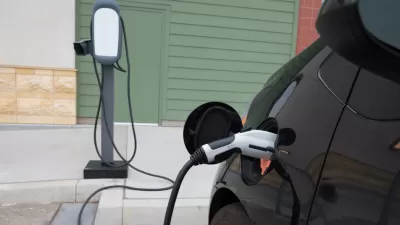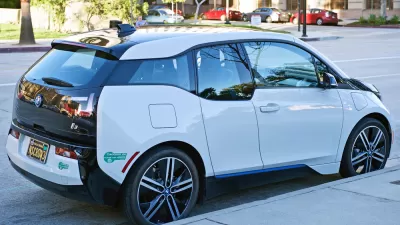The executive order calls for $2.5 billion for rebates and electric charging and hydrogen fueling stations, subject to approval by legislature. His earlier executive order called for 1.5 million zero-emission vehicles by 2025.

The day after delivering his 16th and final state of the state address to the legislature, Gov. Jerry Brown followed through with one of the environmental goals he mentioned in Thursday's speech. During his second year in office in 2012, the Democratic governor signed an executive order calling for 1.5 million zero-emission vehicles (ZEVs) on the road by 2025.
"California leads the country with 350,000 zero-emission vehicles on the road, up from 25,000 six years ago," reports Melody Gutierrez for the San Francisco Chronicle on Jan. 26. A feature article published last April in Utility Dive indicated that the state was lagging in meeting the 2025 goal.
The California Air Resource Board provides incentives in the form of generous rebates for purchases of battery-electric vehicles, both all-battery and lesser amounts for plug-in hybrid electric vehicles; fuel cell electric vehicles, and clean air vehicle decals for these vehicles enabling them to access carpool lanes without passengers and use express lanes without being tolled.
"This $2.5 billion initiative will help bring 250,000 vehicle charging stations and 200 hydrogen fueling stations to California by 2025," states Executive Order B-48-18. It notes that the transportation sector "accounts for 50 percent of the state’s greenhouse gas emissions and 80 percent of smog-forming pollutants" although the air board shows that the transportation accounts for 39 percent in its 2015 greenhouse gas emission inventory released last June.
"The state currently has about 14,000 public charging stations and 31 hydrogen refueling stations," adds Gutierrez for the Chronicle.
The bulk of the funding — $1.6 billion — would come from the state’s cap-and-trade program, while $900 million would come from California Energy Commission revenue.
On the legislative front, Assemblyman Phil Ting (D-San Francisco) introduced AB 1745, the Clean Cars 2040 Act, which bans sales of passenger vehicles with internal combustion engines in California by 2040, i.e., all vehicles sold in-state by that date would have to be zero-emission vehicles in order to be registered. His bill introduced last year to greatly increase rebates for electric vehicles, AB 1141, appears inactive but he is promoting it on his website alongside AB 1745.
FULL STORY: Governor lays out $2.5 billion plan to push for more zero-emission vehicles

Alabama: Trump Terminates Settlements for Black Communities Harmed By Raw Sewage
Trump deemed the landmark civil rights agreement “illegal DEI and environmental justice policy.”

Study: Maui’s Plan to Convert Vacation Rentals to Long-Term Housing Could Cause Nearly $1 Billion Economic Loss
The plan would reduce visitor accommodation by 25% resulting in 1,900 jobs lost.

Why Should We Subsidize Public Transportation?
Many public transit agencies face financial stress due to rising costs, declining fare revenue, and declining subsidies. Transit advocates must provide a strong business case for increasing public transit funding.

Paris Bike Boom Leads to Steep Drop in Air Pollution
The French city’s air quality has improved dramatically in the past 20 years, coinciding with a growth in cycling.

Why Housing Costs More to Build in California Than in Texas
Hard costs like labor and materials combined with ‘soft’ costs such as permitting make building in the San Francisco Bay Area almost three times as costly as in Texas cities.

San Diego County Sees a Rise in Urban Coyotes
San Diego County experiences a rise in urban coyotes, as sightings become prevalent throughout its urban neighbourhoods and surrounding areas.
Urban Design for Planners 1: Software Tools
This six-course series explores essential urban design concepts using open source software and equips planners with the tools they need to participate fully in the urban design process.
Planning for Universal Design
Learn the tools for implementing Universal Design in planning regulations.
Smith Gee Studio
Alamo Area Metropolitan Planning Organization
City of Santa Clarita
Institute for Housing and Urban Development Studies (IHS)
City of Grandview
Harvard GSD Executive Education
Toledo-Lucas County Plan Commissions
Salt Lake City
NYU Wagner Graduate School of Public Service





























